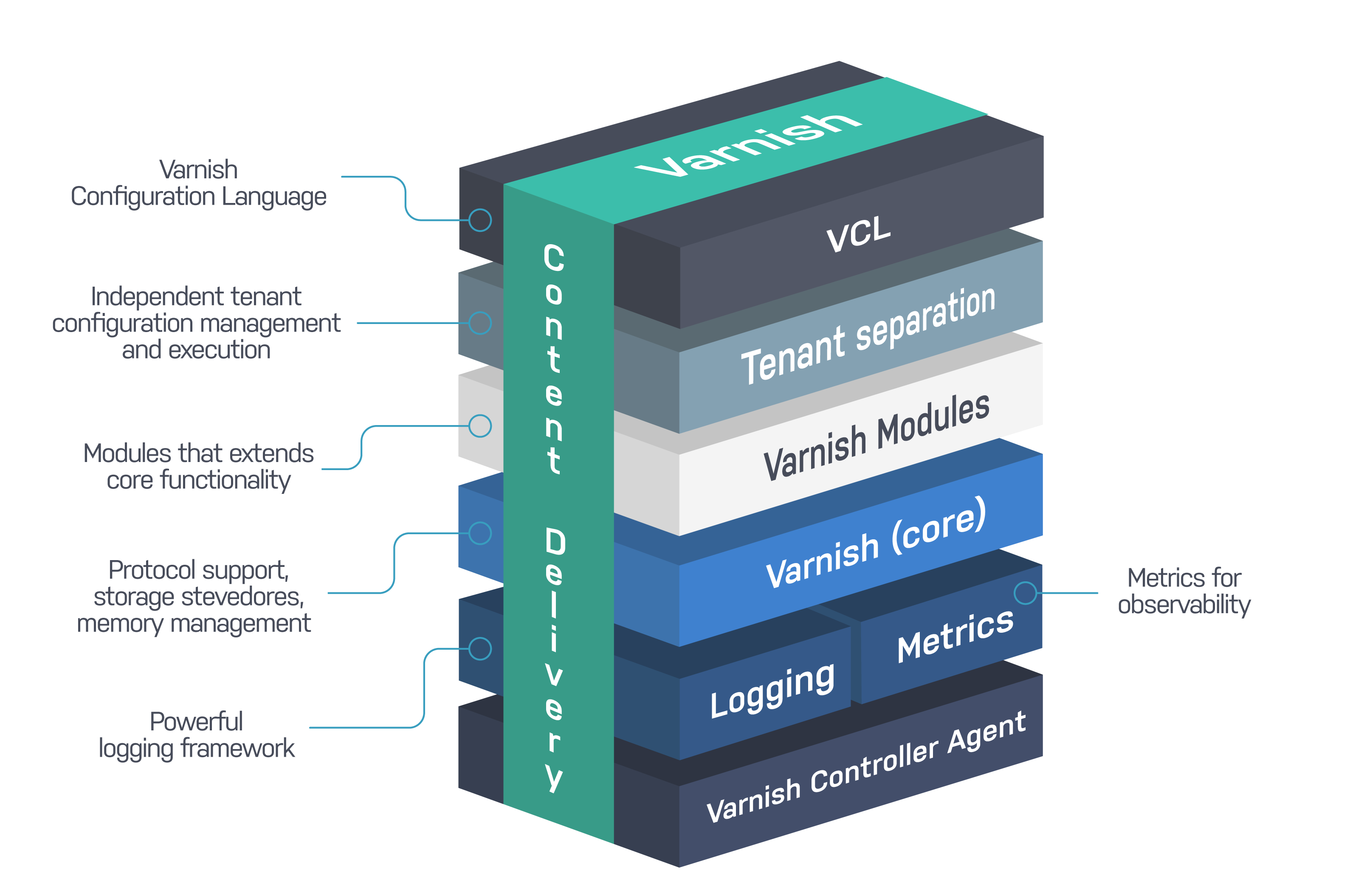Many Varnish users experience Varnish only as an HTTP reverse proxy. Widely adopted to be the middle man sitting between your traffic and your web service, Varnish helps you achieve speed at scale and protects you from unpredictable traffic peaks.
But Varnish is much more than basic caching. In the upcoming blog series we will explore all the things that are under the hood.

Beyond basic caching functionality
Many Varnish users have adopted Varnish Enterprise because there’s a lot more under the hood. Two major cases in point: advanced caching and origin shielding for streaming use cases and for building private CDNs. Much of this functionality comes from core Varnish technologies that include the caching protocol itself, storage and memory management.
It often comes as a surprise to companies evaluating Varnish that part of the core technology includes multi-terabyte storage at the edge of your network for content, such as video-on-demand libraries, and memory optimization that ensures you’re getting the very best out of your hardware at all times.
Extensibility
The fun doesn’t stop there, however. Varnish offers a host of Varnish modules (VMODs), all of which extend the functionality of your Varnish deployment. It’s possible to do everything from load balancing to rate limiting, from request slicing to geolocation -- and much more with VMODs. VMODs have long been a secret superpower for Varnish technology, providing out-of-the-box functionality to enhance your deployment and expand what you can do with Varnish.
Flexibility and control
If a VMOD doesn’t already exist to satisfy your use case, Varnish offers the Varnish Configuration Language (VCL), which lets you define and configure Varnish to meet your requirements. VCL is an edge compute language that lets you make instant changes while Varnish is running, providing an extra layer of flexibility and control.
What’s happening under the hood?
Bringing all of this performance and configuration together, Varnish also offers comprehensive logging and metrics for traffic and health analysis, accessible from a single control console, Varnish Controller. You don’t have to use the Controller because Varnish is flexible like that, but it provides a more visual way to manage your Varnish setup and see what’s happening under the hood.
Building a private CDN
Once you’ve put all these components together you quickly realize you’ve got everything you need for a private CDN solution. Varnish can offer, then, lots of different pieces of the web-performance puzzle but can also act as the sum of its parts by combining to create a powerful and flexible content delivery solution.
/VS-logo-2020-197x60.png?width=136&height=60&name=VS-logo-2020-197x60.png)




